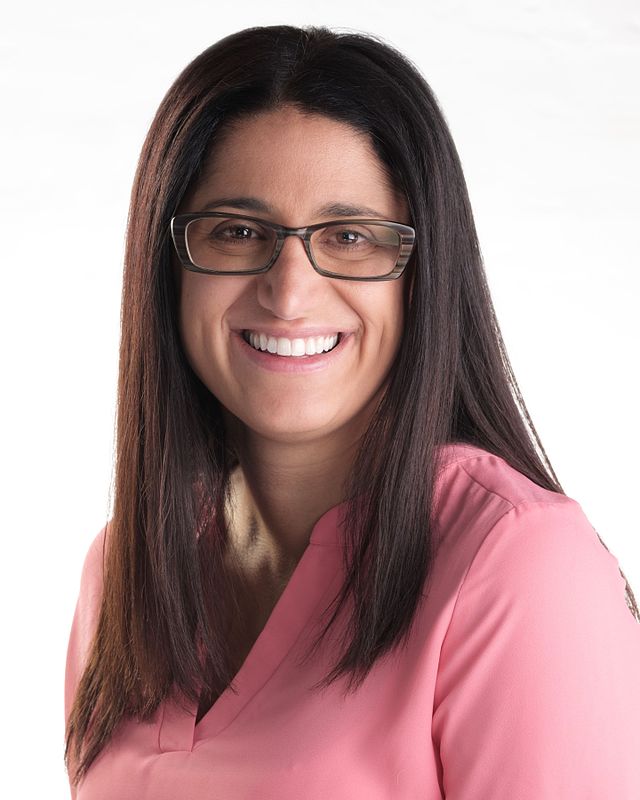
Wikimedia Commons
On Tuesday, nearly 50 people from around the world gathered on Zoom to listen to Mona Hanna-Attisha, the public health researcher largely responsible for spearheading the movement to bring justice to the inhabitants of Flint, Michigan, following the onset of the city’s 2014 lead poisoning public health crisis.
The event was a part of the Gruber Program for Global Justice and Women’s Rights, a larger program at the Yale Law School. While Hanna-Attisha, more commonly referred to as Dr. Mona, focused primarily on her experiences advocating for public health justice, she also spoke about the role her upbringing played in her later response to the Flint water crisis. The daughter of immigrants who fled Iraq in the wake of Saddam Hussein’s rise, Hanna-Attisha highlighted the importance of her background in driving her to become a pediatrician and public health advocate.
“It was that immigrant perspective of being fully aware of injustices that were happening … that pushed me to medicine, that pushed me to service, that pushed me to really practicing medicine in one of our most vulnerable communities,” Hanna-Attisha said.
Born in England in the 1970s, Hanna-Attisha later immigrated with her parents to the United States, spending a majority of her youth in Michigan. She witnessed firsthand the decline of Flint following the shutdown of the General Motors factory.
By 2010, over 40 percent of Flint residents had fallen below the poverty line and the city was approaching bankruptcy. With the city in financial straits, the state’s governor sent in state officials to take over the management of the city.
“We were near bankruptcy, and the state came in and took over so we were under emergency management, and the role of local elected officials was gone,” Hanna-Attisha said. “So before Flint was a water story, Flint was a democracy story.”
In an attempt to save money, the state officials switched the source of the city’s water from the Detroit River and Lake Huron to the Flint River. While this decision would save the city money, the river was also highly contaminated because the treatment facility neglected to properly purify the water before sending it off to the inhabitants of Flint. Residents, including Hanna-Attisha, would later discover that the water lacked the critical chemical that prevented contaminated water from leaching lead from pipes into the water supply. Eventually, the residents began to notice that the water was no longer coming out clear, but rather was yellow, dirty and foul-smelling.
By this time, Hanna-Attisha had earned multiple medical degrees and was practicing as a pediatrician. Initially, Hanna-Attisha thought nothing of Flint’s water situation, and ensured her patients the water was safe to use; however, this all changed when a childhood friend and expert in drinking water informed Hanna-Attisha the water was not being properly treated. Soon after, Hanna-Attisha began working with researchers from Virginia Tech to research and compare rates of blood lead levels in Flint’s children before and after the change in the city’s water supply. What they found did not surprise her: high levels of lead in children’s blood.
Since then, Hanna-Attisha has been an advocate of environmental and racial justice for the people of Flint. Her work has also continued into the city’s response to the COVID-19 pandemic. One positive of the Flint water crisis, Hanna-Attisha said, was that the city had largely built up the infrastructure necessary to combat a public health crisis. Still, she added, the pandemic has hit the residents of Flint hard.
Hanna-Attisha was chosen to speak after being nominated through the Gruber Program’s open-call process. After conducting a background check and reviewing Hanna-Attisha’s accomplishments, Mindy Roseman, director of the Gruber Program, presented her name to a committee made up of several academics across the professional and graduate schools. Although Hanna-Attisha was on a shortlist of several other accomplished individuals, according to Roseman, there was an overwhelming consensus that Hanna-Attisha should be the next lecturer.
Among the committee members who voted for Hanna-Attisha was Kaveh Khoshnood SPH ’89 GRD ’95, an associate professor of epidemiology at the Yale School of Public Health. Khoshnood, who interviewed Hanna-Attisha for the Gruber lecture, praised her professional success and activism.
“That’s not something many academicians, many public health people, doctors feel comfortable saying,” Khoshnood said. “That advocacy is part of their job, but I feel like this is a time when we all need to be advocates for … marginalized and vulnerable populations. We need to speak up. We need to stand up. We can’t just do our science and put it out there and just hope for the best. It’s not going to work. It’s not going to make the difference.”
Hanna-Attisha published her autobiography, “What the Eyes Don’t See: A Story of Crisis, Resistance, and Hope in an American City,” in June of 2018.
Marissa Blum | marissa.blum@yale.edu







